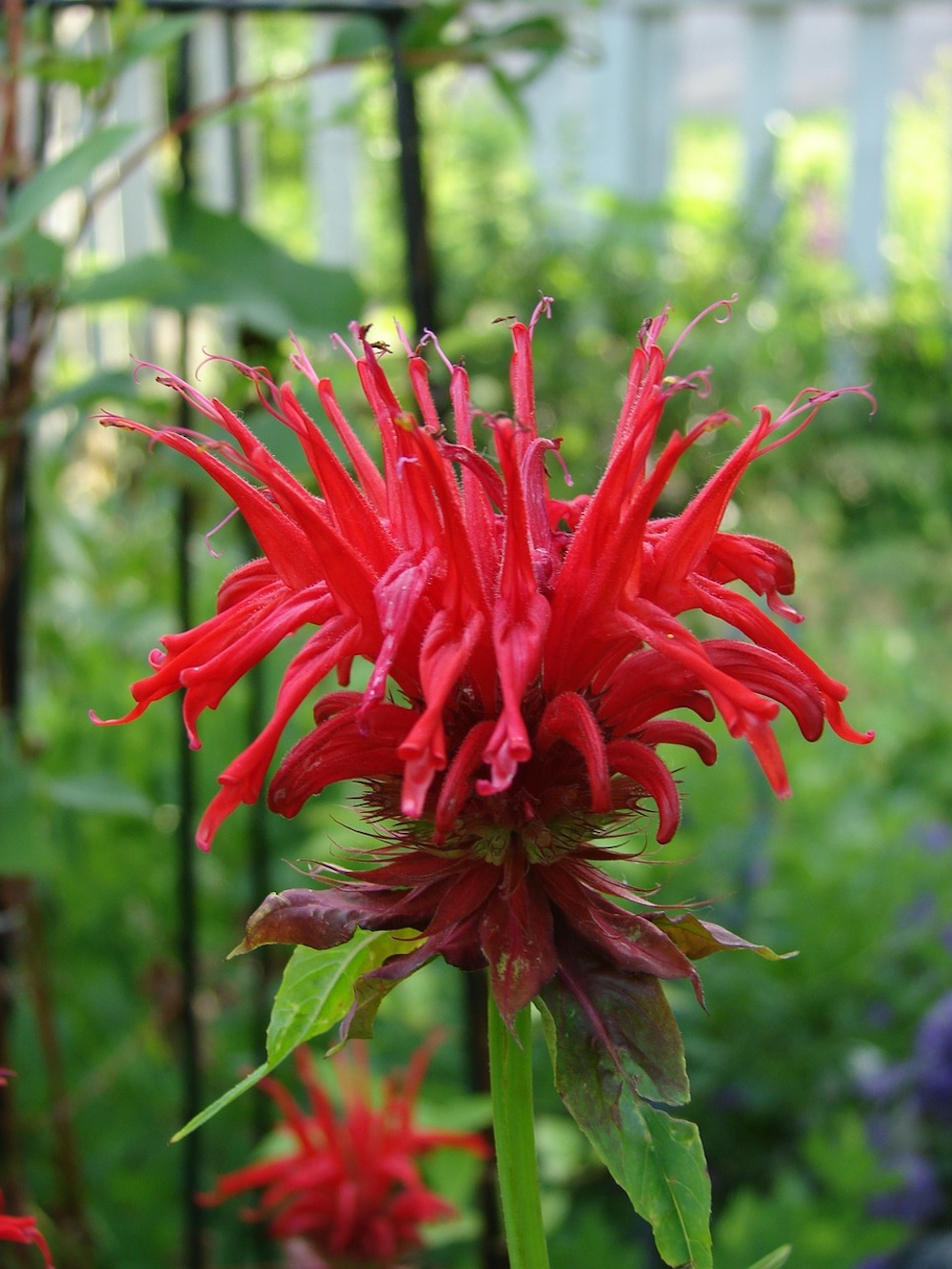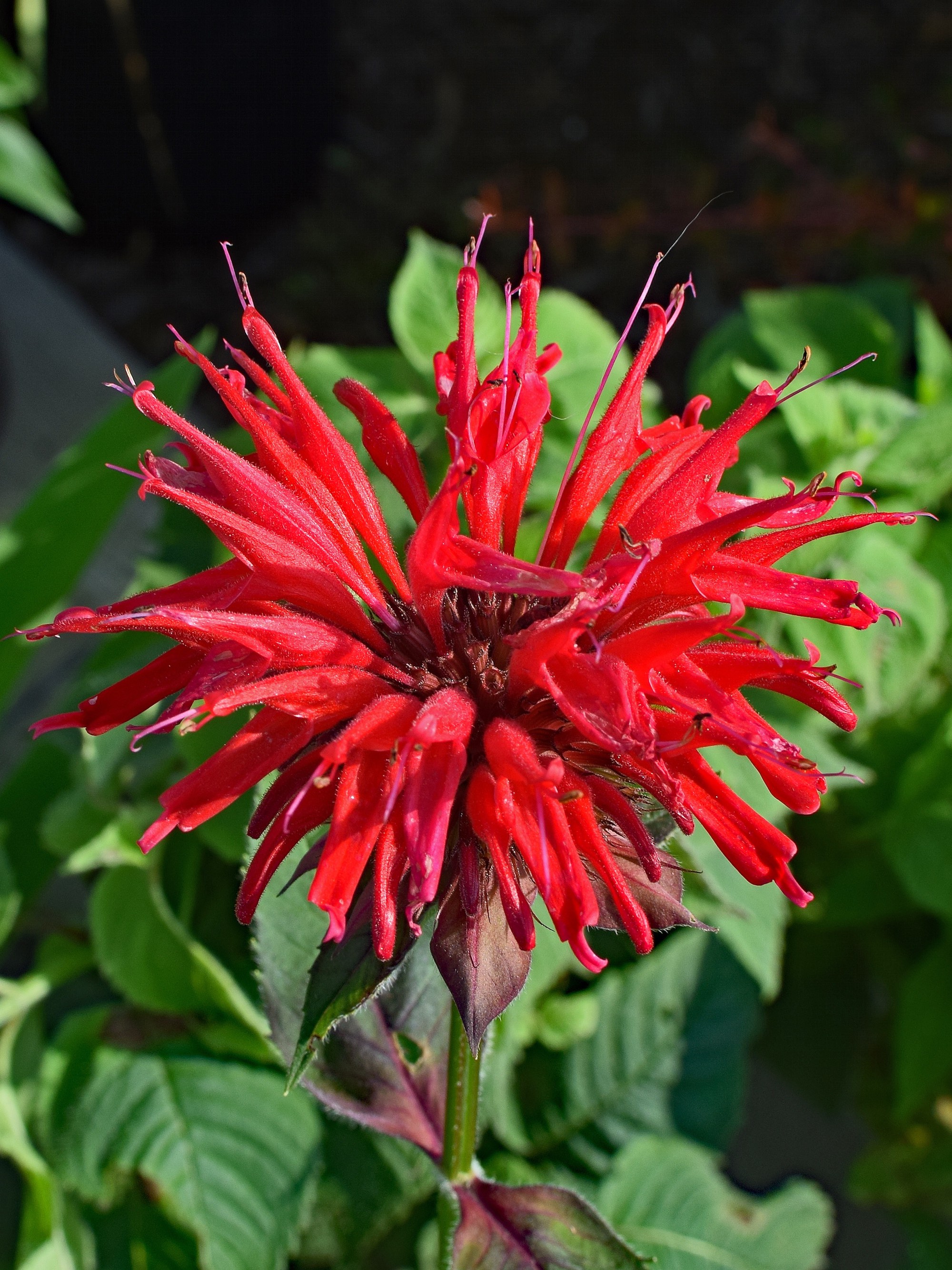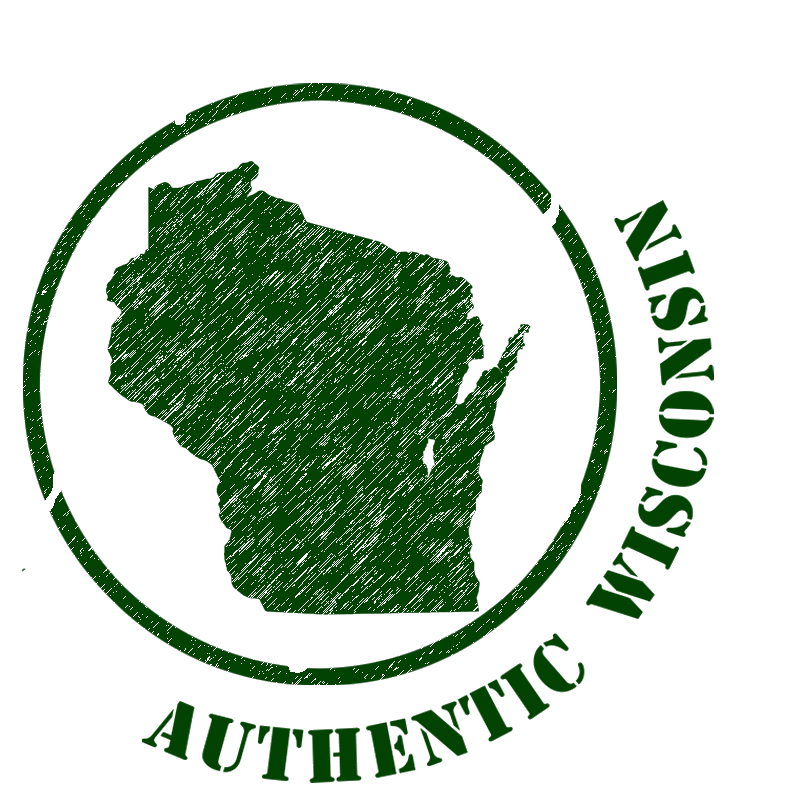 Beebalm - Monarda didyma
Beebalm - Monarda didyma
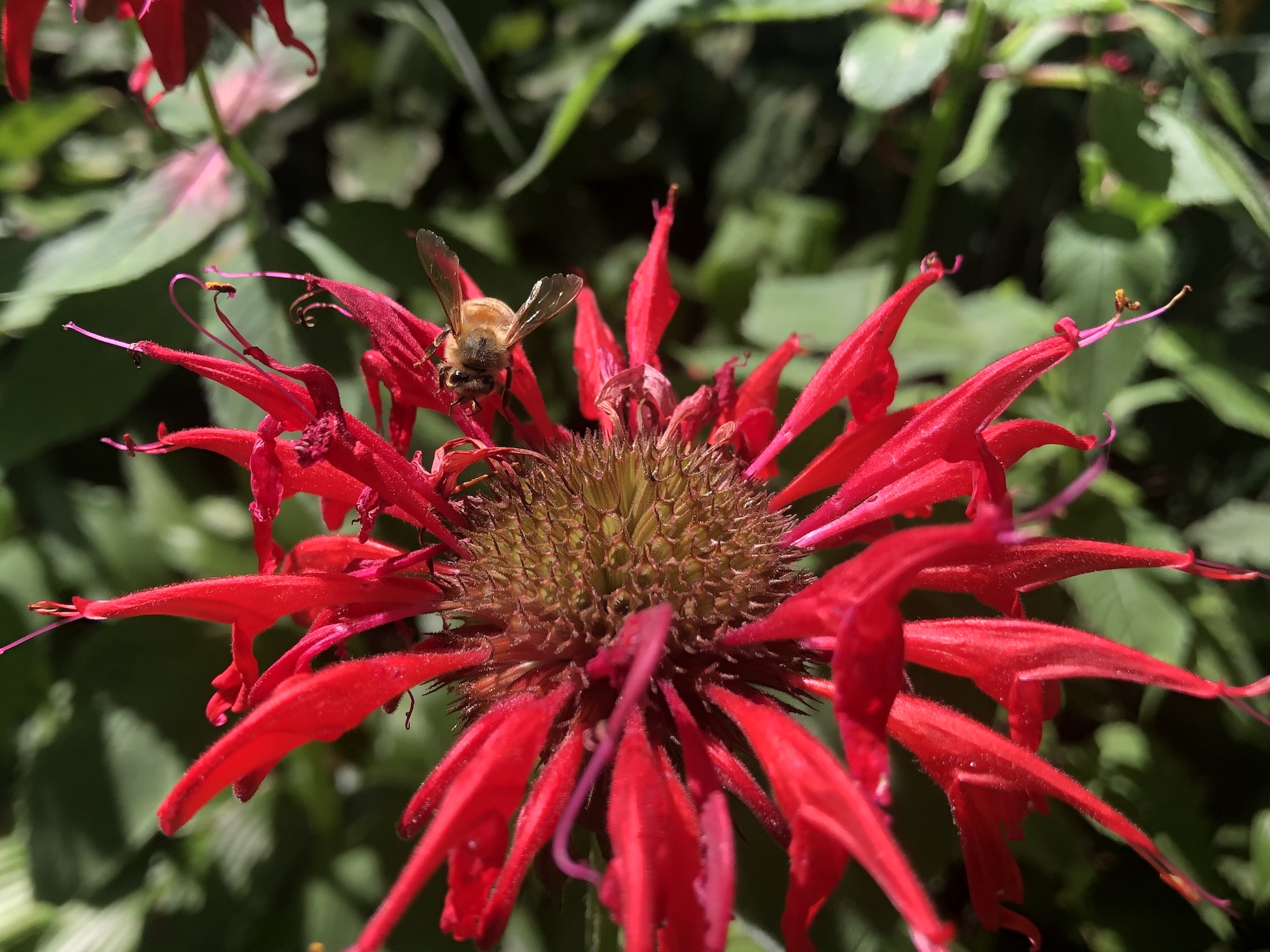
Above: "Beebalm near Agawa Path in Madison, Wisconsin (7/11/21).
Beebalm - Monarda didyma (Introduced)
Beebalm is member of the mint family. It grows best in full sun, but tolerates light shade and thrives in any moist, but well-drained soil.
Beebalm has ragged, bright red tubular flowers 3–4 cm long, borne on showy heads of about 30 together, with reddish bracts.
Bee balm leaves are opposite on square stems. The leaves are toothed, about 4-inches long and have a distinctive odor.
Blooms from mid- to late summer.
The Native Americans of Oswego, New York, made the leaves into a tea, giving the plant one of its common names (Oswego-tea).
Other names: Bee Balm, Oswego-tea, scarlet bee balm, Crimson beebalm, Scarlet monarda.
Another wildflower, Bergamot (Monarda fistulosa) is also referred to as Bee Balm.
For more information on the Beebalm, visit Wikipedia.
Or, visit the UW-Madison Wisconsin State Herbarium website page about Beebalm - Monarda didyma.
Beebalm
Monarda didyma
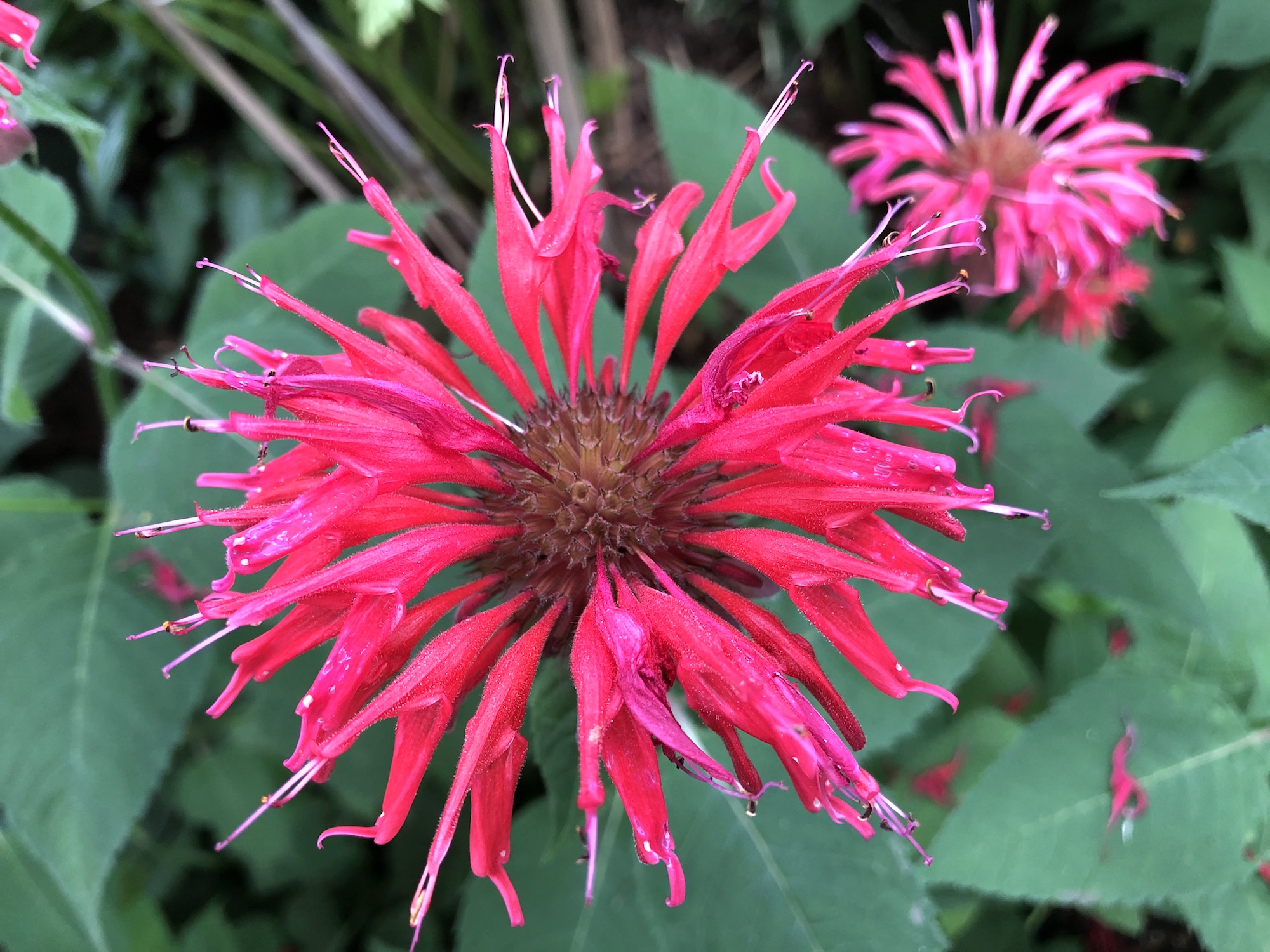
Above: Beebalm near Agawa Path in Madison, Wisconsin (7/9/20).
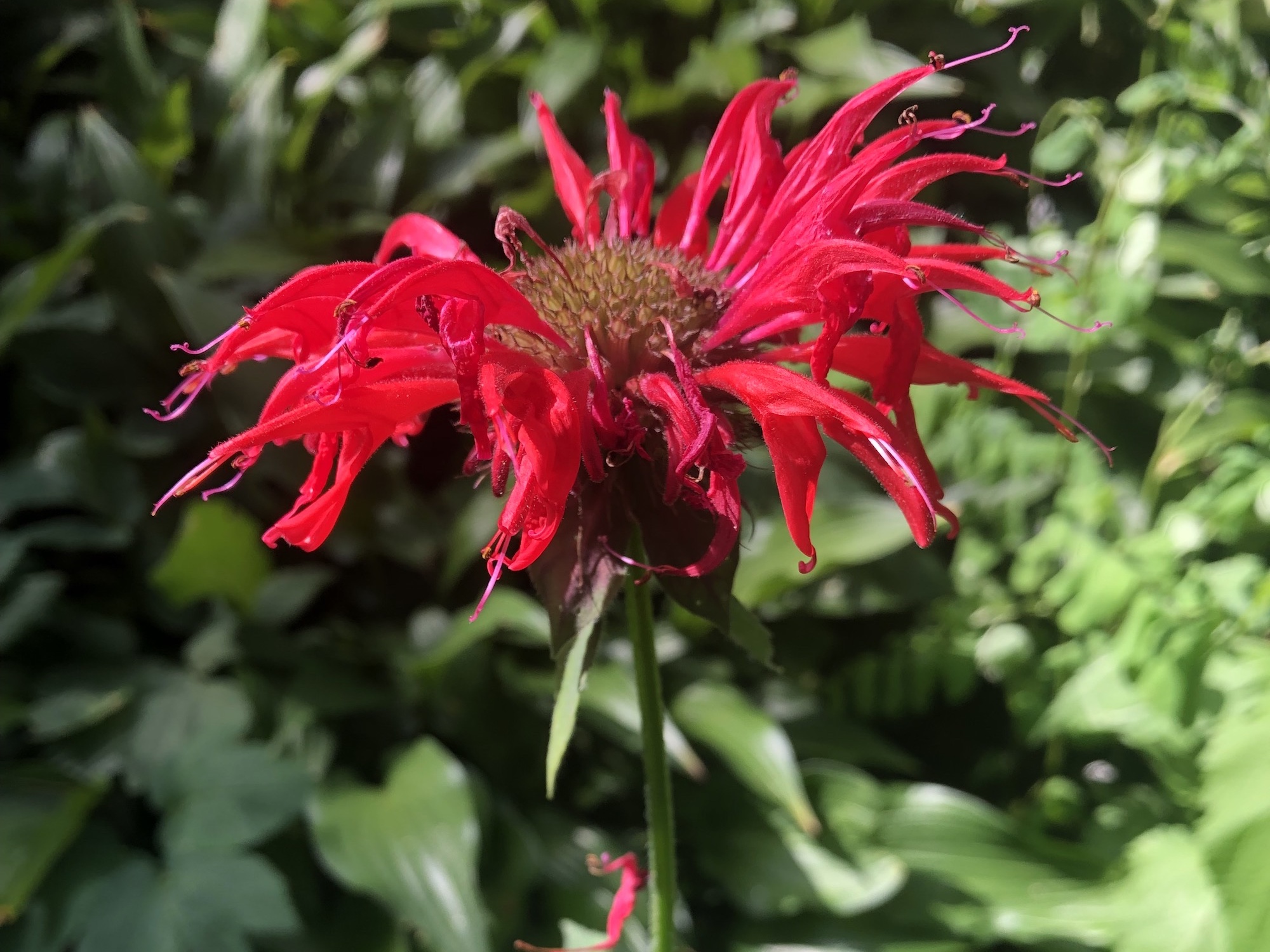
Above: Beebalm near Agawa Path in Madison, Wisconsin (7/11/21).
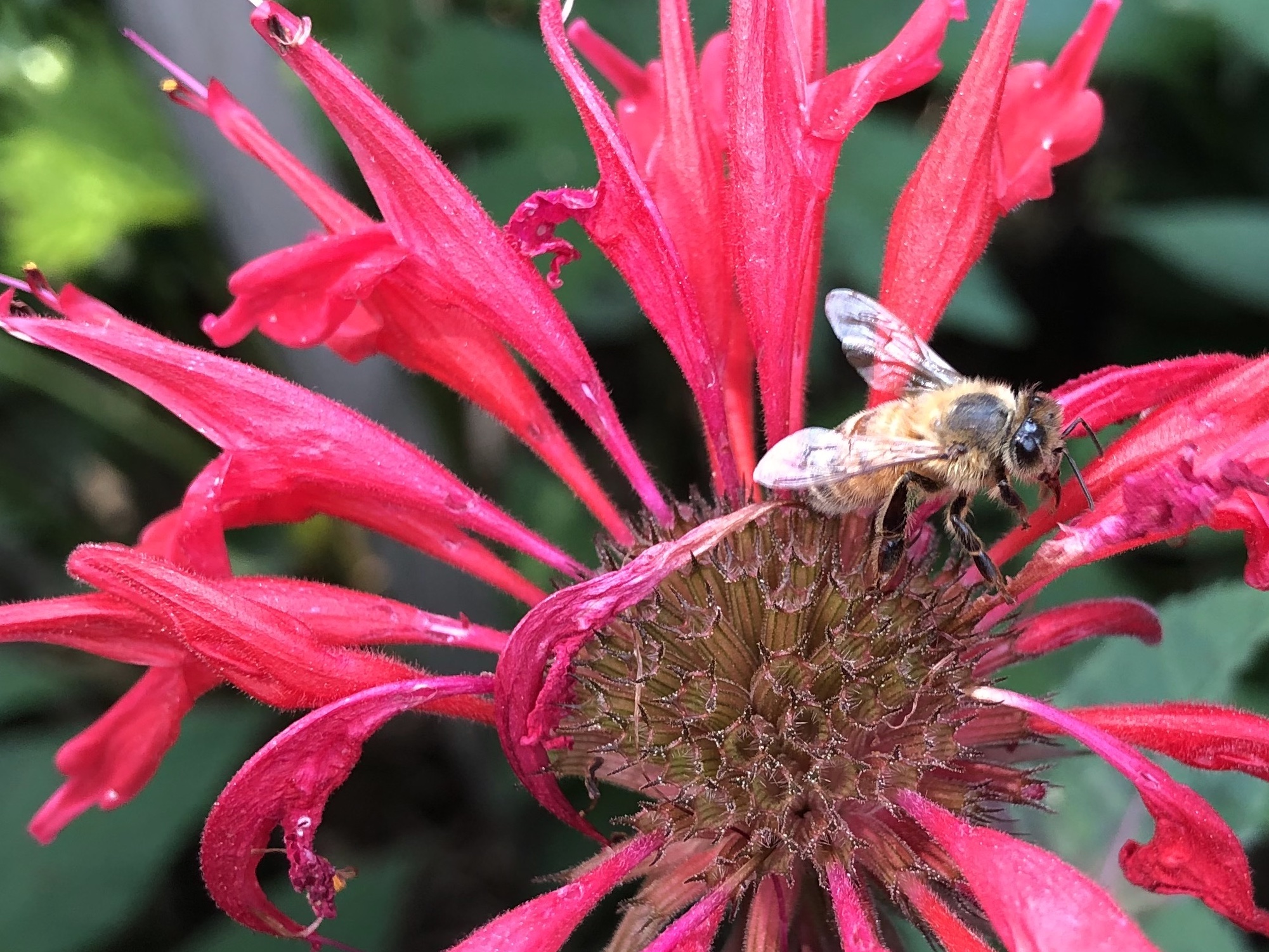
Above: Beebalm near Agawa Path in Madison, Wisconsin (7/20/21).

Above: Beebalm along bike path between Duck Pond and Marion Dunn Prairie in Madison, Wisconsin (7/14/21).
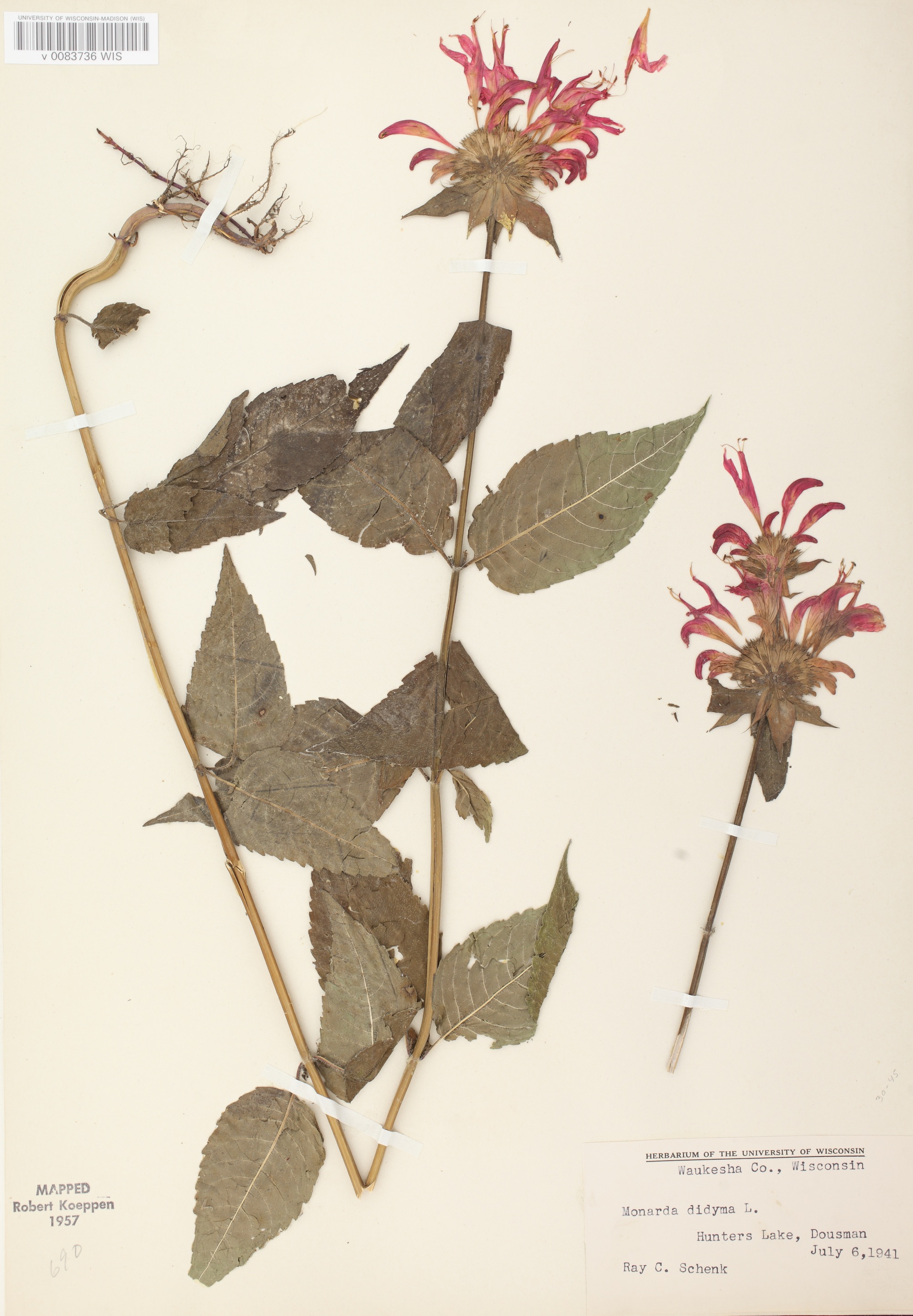
Above: Beebalm (Monarda didyma) specimen collected in Dousman, Wisconsin at Hunters Lake (7/6/1941).
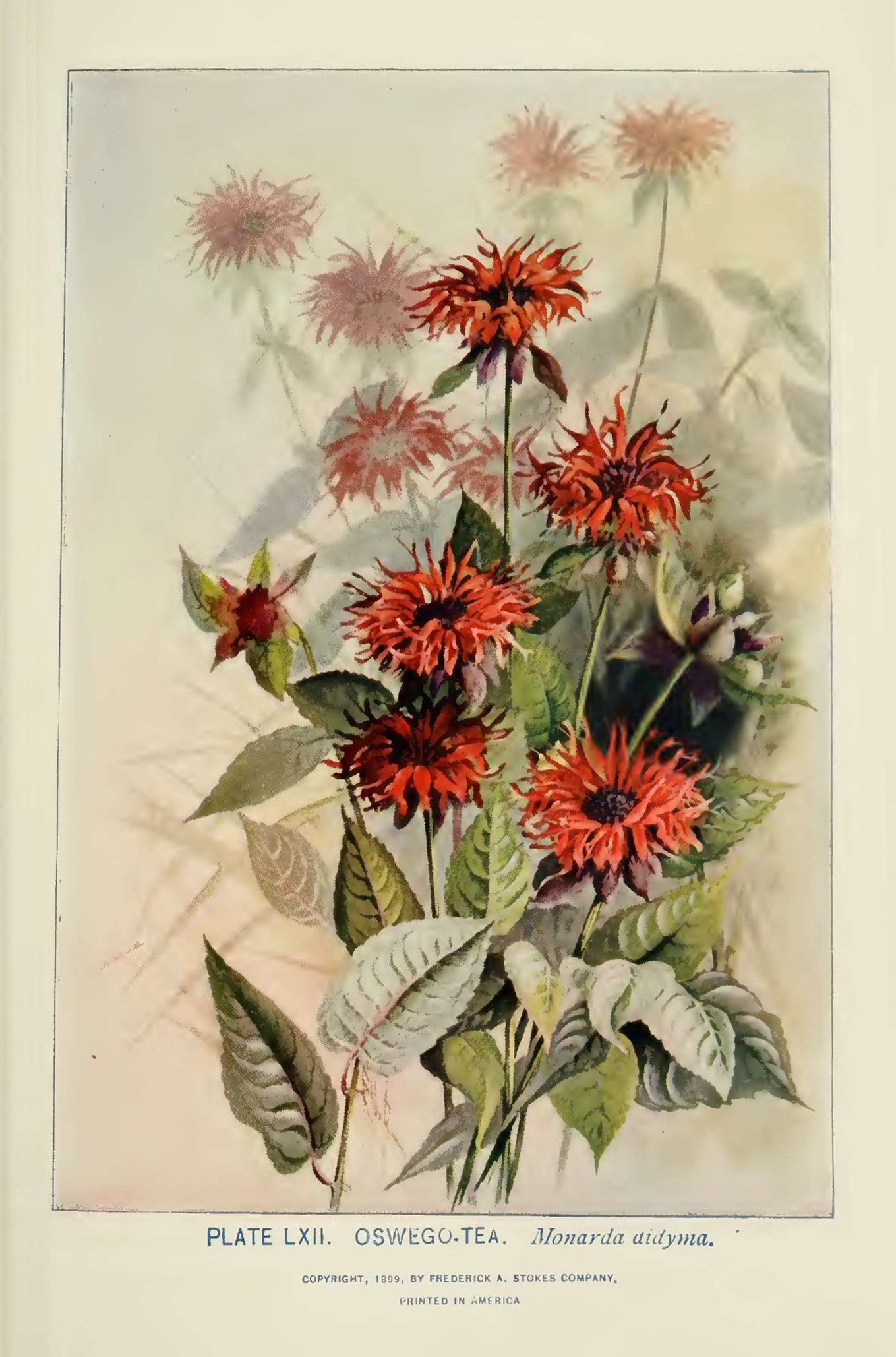
Above: Beebalm (Monarda didyma) botanical illustration by Alice Lounsberry circa 1899.
